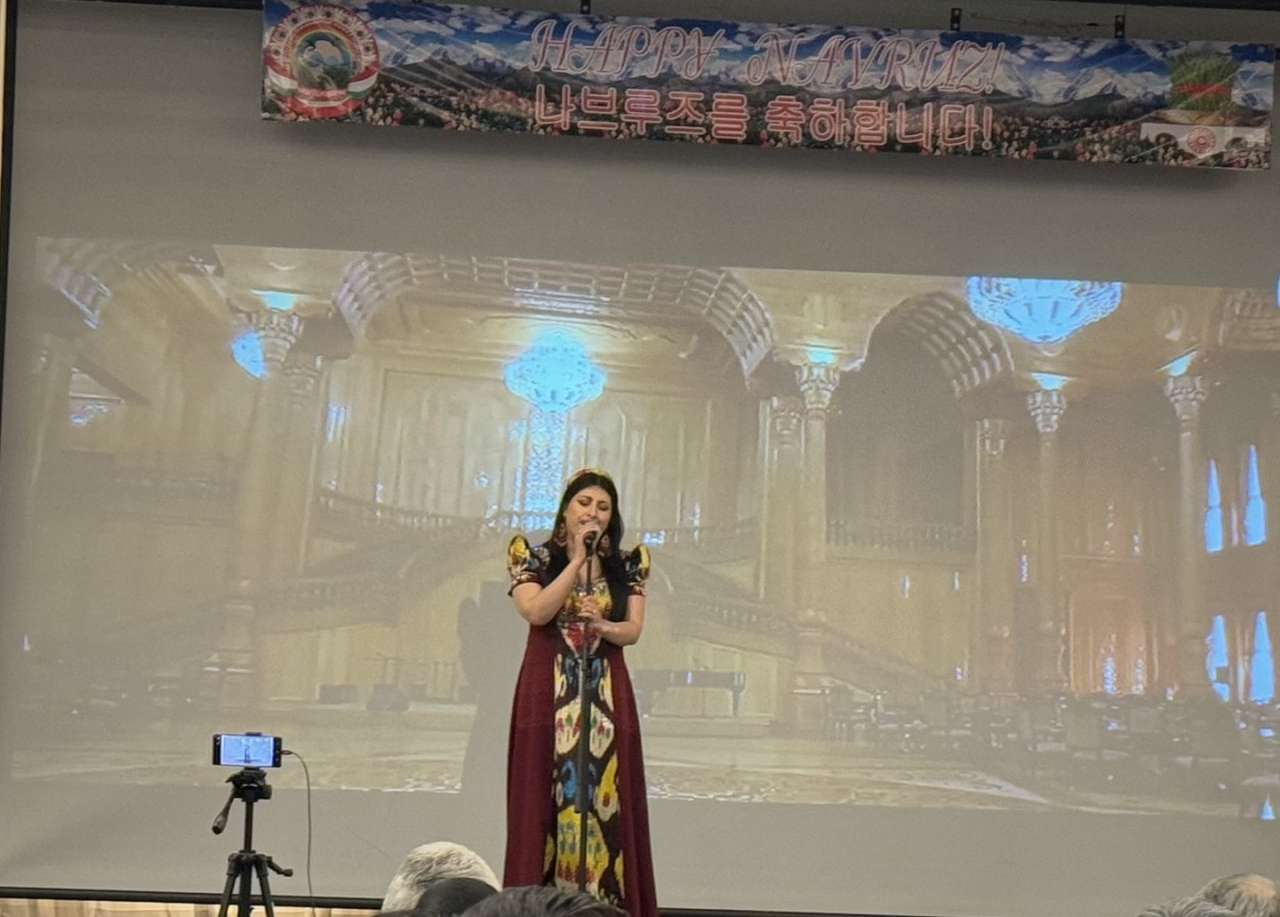 |
A Tajik artist performs folk song during Navruz celebrations at K-Hotel in Seocho-gu, Seoul on Monday.(Sanjay Kumar/The Korea Herald) |
The Tajikistan embassy in Seoul highlighted the core of peace, tolerance and new beginnings marking Navruz on Monday.
Navruz means "New Day," symbolizing the rejuvenation of nature and the start of a new year. The festival is celebrated on the first day of spring, typically on March 21, coinciding with the astronomical vernal equinox.
The festival is said to have a historic tradition of thousands of years in regions along the Silk Roads, including the Balkans, the Black Sea Basin, the Caucasus, Central Asia and the Middle East, and is celebrated on March 21 every year as part of rites in Afghanistan, Azerbaijan, India, Iran, Iraq, Kyrgyzstan, Kazakhstan, Pakistan, Tajikistan, Turkey, Turkmenistan and Uzbekistan.
“The arrival of Navruz brings not only the beauty of spring but also the promise of a fresh start,” said Tajik ambassador to Korea Salohiddin Kirom in his remarks at Navruz celebrations in Seoul.
“Navruz is about celebrating peace, tolerance and new beginnings,” said Kirom.
“Navruz, with its six-thousand-year history, continues to be deeply rooted in our hearts and minds,” he said, noting that Navruz is a powerful reminder of heritage with cultural connection across generations.
Tajikistan officially declared Navruz as a national holiday on March 21 in the late 1980s.
Since gaining independence in 1991, Tajikistan under the leadership of President Emomali Rahmon has further enhanced Navruz festivities, expanding them with greater magnificence and splendor, according to Kirom.
“While there are legends attributing its establishment to Jamshid-i Peshdadi, historical evidence suggests it may be even older,” said Kirom.
The legend of Jamshid, a king in Persian mythology, tells of his remarkable feat of being carried through the air in a chariot, which led to the establishment of a festival in celebration. Similar narratives are found in Indian, Turkish and Central Asian traditions.
The legend of Amu Nowruz, or Uncle Nowruz, a legendary figure from Iranian folklore, is also prominent in Central Asian countries, where Uncle Nowruz is revered as a symbol of Nowruz and is believed to bring gifts to children during the festive nights.
“The holiday was extended up to one week, allowing people to fully immerse themselves in the traditions,” said Kiromov.
"In 2010, the United Nations General Assembly declared March 21 the International Day of Nowruz. Navruz was also inscribed on the UNESCO Representative List of Intangible Cultural Heritage, a testament to its shared significance across multiple countries, including Tajikistan,” said Kirom.
“Even in the 21st century, amidst rapid technological advancements, Navruz remains a vital source of spiritual and social connection for our people,” Kiromov underlined.
"Har Ruzaton Navruz bod,” hoped Kirom in Tajik language, meaning "May every day be a Navruz for you."
The event was attended by the ambassadors of the Navruz region, heads of Korean companies, NGOs, and Tajik nationals in South Korea.







